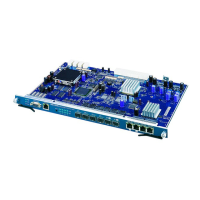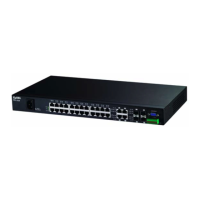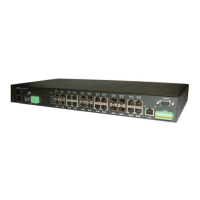Chapter 36 voip Commands
Management Switch Card User’s Guide
1068
set <name> <index>
[<pattern> <rule>]
This command replaces the pattern (the dialed
number) with the specified rule.
The system applies the rules in numerical order,
from 1 ~ 16, so ordering is important.
name: Up to 31 characters.
index: The entry number (1 ~ 16) in the
numberplan table.
pattern: The dialed number for which this rule
applies. Up to 47 characters.
Allowed characters:
Digits, '*', and '#'.
Meaning characters including 'x', '.', and '|'.
Range format characters including '~' and ','.
Parenthesis '(', ')' and brackets '[', ']'.
At most one parenthesis pair and 'T' for terminate
are allowed.
Two quotation marks ("") means a null pattern for
hot dial.
Examples: "002(x.)", "0(x.)", and "(x.)"
rule: The value with which the pattern is to be
replaced. Up to 15 characters. Allowed characters
are 0~9, and:
“\c”: Countrycode
“\d”: National destination (region) code
"\1" stands for a matched string enclosed by
the parenthesis pair
"\t" stands for playing the confirmation tone
"\r" stands for playing the recall dial tone
“deny”: The specified pattern is not allowed.
<tel> accept 1-15 digits including '+', '*' and
'#' for hot or speed dial applications
examples: "\1", "\c\1", and "\c\d\1"
Note: If only pattern is set, the indexed <pattern>
<rule> pair will be cleared.
'x' represents a digit, a '*', or a '#'
'.' represents zero or more repetitions of the
character or range that precedes it. You
cannot use the dot character '.' in brackets.
'|' used to separate multiple number plan
patterns
'[' and ']' must pair and you cannot nest
brackets
'~' and ',' are allowed in brackets only
'~' connected characters must be digits
'T' stands for '#' to terminate and dial out at
once.
8
show [<name>]
Displays the entries in the specified numbering
plan table.
1
Table 390 voip Commands (continued)
COMMAND DESCRIPTION P

